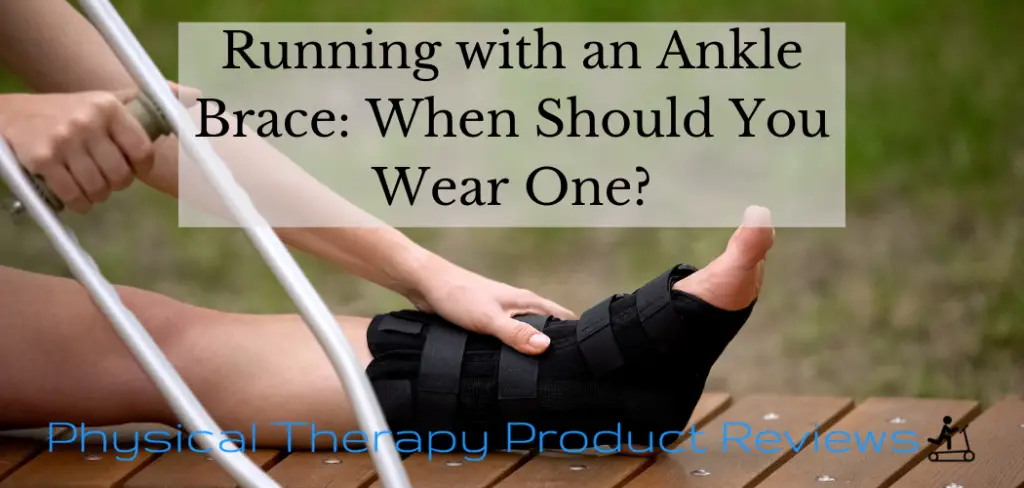If you’re a runner and have a history of ankle problems, you may have wondered whether or not you need to wear an ankle brace. Running is a great way to exercise but does put stress on the ankle joint.
If you have sprained, broken, or had surgery on your ankle, running with an ankle brace may be an excellent option to help you run with less pain. However, certain people and times when wearing an ankle brace doesn’t provide any additional benefit.
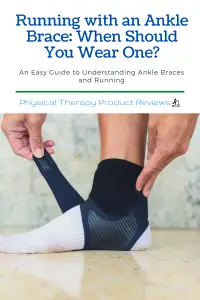
Ankle braces can be bulky, expensive, and a nuisance that if you don’t use them, you would gladly not wear one. However, it can be a saving grace to get you back to running.
This article will discuss when you should wear an ankle brace for running, who shouldn’t wear one, and which ankle braces are best for running.
When Should You Wear an Ankle Brace When Running?
For clarity’s sake, we prefer that people do not wear an ankle brace with running. We would rather have patients strengthen the muscle in the ankle to provide the stability that they need for running.
The stronger the ankle is, the more likely you can prevent injuries such as an ankle sprain on your own. However, there are specific situations where an ankle brace for running is beneficial.
The most common time to wear an ankle brace when running is after you’ve had an acute ankle injury, ankle arthritis, and chronic ankle instability.
After an Acute Ankle Injury
This includes an ankle sprain, fracture, or surgery. Wearing an ankle brace can help protect the ankle from further injury and also help with pain relief.

Ankle braces are protective in the early stages of recovery post-injury and can allow for everything to heal without risking further damage.
In this early phase, wearing an ankle brace can also help manage swelling and prevent it from swelling too much. The sooner the swelling is under control, the sooner you can get back to running.
For Anyone with Ankle Arthritis
Ankle arthritis is a common chronic ankle problem that can make running painful. The ankle brace helps to offload and support the ankle joint simultaneously, which can help with pain relief.
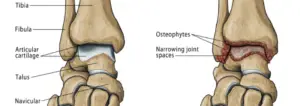
If you have ankle arthritis and want to continue running, wearing an ankle brace can help you keep the pain under control and reduce the amount of pain after running.
Wear an Ankle Brace with Chronic Ankle Instability
Chronic Ankle Instability is an issue that develops after suffering from frequent ankle sprains. Over time, the ankle becomes weak and unstable, causing more pain and dysfunction with activity.
If you have chronic ankle instability, wearing an ankle brace can help to prevent your ankle from giving out on you while running. An ankle brace or an ankle compression sleeve can help give just enough support to avoid the feeling of instability and keep you running without pain.
Who Shouldn’t Wear an Ankle Brace When Running
Certain people shouldn’t wear an ankle brace when running, and this includes people with no history of an ankle injury, those with sensory deficits, and those that haven’t tried an ankle strengthening program.
You don’t want to wear an ankle brace unless you have to. There is evidence in the medical literature that our muscles can become weaker by relying on the ankle brace for stability.
We want the body to stabilize as much as possible to improve strength, balance, and proprioception.
Anyone with No Prior Ankle Injuries
If you don’t have a history of ankle injuries, there is no need to wear an ankle brace when running. Your muscles need to gain strength, and wearing a brace may hinder that development.
Sensory Deficits
If you have any sensory deficits in your feet or ankles, wearing an ankle brace can cause unnecessary friction and compression that you may not be able to feel. This can increase the risk of developing blisters, open sores, or nerve compression that you may not be able to feel.
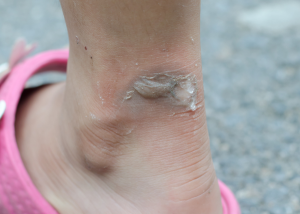
This can also increase your risk of other injuries and cause other issues. If you have significant neuropathy or other sensory deficits, proceed with caution.
Anyone Who Hasn’t Fully Performed Ankle Strengthening Exercises
If you have ankle instability, the best way to improve the stability of your ankle is by doing ankle strengthening exercises. These exercises help to improve proprioception and proprioceptive awareness, as well as muscle strength.
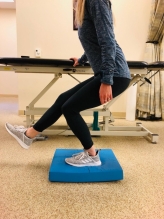
Wearing an ankle brace can be a helpful tool in managing pain and preventing further injury. However, it’s essential to know when you should and shouldn’t be wearing an ankle brace.
Ankle braces are not meant to be worn all the time but only when necessary. Wearing ankle braces can cause your muscles to weaken over time and make your ankle more susceptible to injury.
If you’re unsure whether or not you should be wearing an ankle brace, consult with a physical therapist for guidance. They can help you determine if an ankle brace is right for you and which type of ankle brace would be best.
How Long Do You Wear an Ankle Brace?
The duration of time that you need to wear an ankle brace will depend on the severity of your ankle injury. Most people typically need to wear an ankle brace for at least 4 to 6 weeks after sustaining an ankle injury.
If you have chronic ankle instability or arthritis, you may need to wear an ankle brace for more extended periods. In these instances, use a brace for running until you can truly develop the muscular strength to support an entire run without pain.
If you have suffered multiple sprained ankles or other injuries, you may have to wear an ankle brace every time you run. A good test for this is the swelling test.
If you go for a run and your ankle swells, is painful during or after, and you feel like you have to be ginger on it the next day, then you should try wearing an ankle brace with running until that improves.
Some people wear an ankle brace or ankle compression sleeve forever after developing significant chronic ankle instability.
Which Ankle Brace is Best for Running?
The best ankle brace for running will depend on your specific needs.
Some ankle braces are better than others for running. When choosing an ankle brace, comfort, support, and breathability are the most critical factors.
It’s also essential to ensure that the ankle brace you choose doesn’t rub or chafe when you run. It will only aggravate your ankle and make running more challenging if it does.
We typically recommend two different ankle braces for runners, depending on their needs. One is a more supportive lace-up option, while the other is a more comfortable but less supportive ankle compression sleeve.

For more support, we recommend the ASO ankle brace. This brace has extra reinforcement on both sides and just above the ankle. This brace is best for recent ankle sprains, severe arthritis, and those with moderate-severe chronic ankle instability.

The other brace that we recommend to people is an ankle compression sleeve. An ankle compression sleeve provides a little support to the joint but is lightweight, more comfortable, breathable, and less bulky than the lace-up option.
This is an excellent option for those with mild ankle instability and arthritis and those who had an ankle sprain that is now recovered after a few months.
Exercises to Improve Ankle Strength for Runners
If you want to improve ankle strength and prevent ankle injuries, there are some exercises that you can do to help reduce injury and improve your strength and stability.
One of the best ways to improve ankle stability is by doing balance exercises. These exercises help to improve proprioception and proprioceptive awareness around the ankle joint.
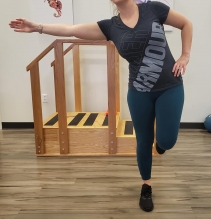
Plyometric exercises are also helpful in improving ankle muscle strength. These exercises involve explosive movements that help to build power and ankle muscle strength.
Finally, basic ankle strengthening exercises are essential in improving ankle stability and preventing ankle injuries. These exercises help to improve proprioception, joint stability, muscle strength, and joint range of motion.
Examples of commons ankle strengthening exercises that we recommend include:
- Calf raises
- 4-way Banded ankle
- Single leg balance exercises
- Single leg balance on a wobble board
- Single leg squats
Conclusion
If you’re wondering if you should be wearing an ankle brace for running, the answer is that it depends on your individual needs. If you have a recent ankle sprain, moderate-severe chronic ankle instability, or arthritis, you will likely need to wear an ankle brace when running.
Ankle braces can provide support and stability to the ankle joint and help to prevent further ankle injuries. When choosing an ankle brace, it’s essential to consider comfort, support, and breathability.
We highly recommend strengthening the ankle as much as possible so that you don’t have to rely on an ankle brace when you perform dynamic activities such as running.
If you run with an ankle brace, let us know your experience in the comments below and what brace you like to use with running.
Disclaimer: The information provided in this post is for educational purposes only. This is not a substitute for a medical appointment. Please refer to your physician before starting any exercise program.
